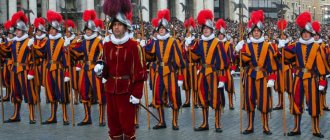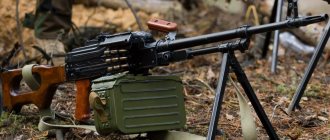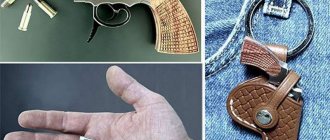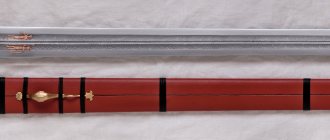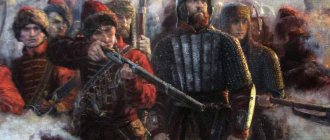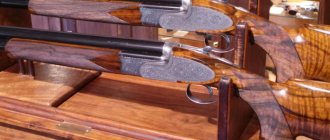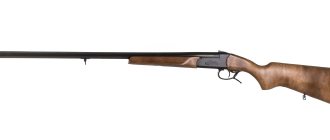It is believed that the history of the origin of the original Cossack checker dates back to the 7th-8th centuries. At first, it was in demand among the Kazakh people and had the name “sashkho”, which translated from the language of the Abkhaz-Adyghe group means “huge knife”. For quite some time, the Cossack saber was not in great demand among soldiers. Everything changed when, after a certain number of years, inconvenient armor and sophisticated fencing began to be replaced as methods of self-defense. They were replaced by musket fire and a simple, cheap, but excellent weapon in battle - the saber. Such weapons strike suddenly and only one is enough to completely defeat the enemy.
Types and main characteristics of Cossack checkers
Externally, a saber consists of two main components: a blade and a handle (hilt).
The first checker of the Asian type was called “Nizhny Novgorod”.
According to the standard, the primary characteristics of the checker were as follows: length - 890 mm, width - 33 mm, thickness 7 mm.
The handle of the Cossack saber was carved from wood, and its top was decorated with a knob whose shape resembles a double beak. The scabbard had four clips: two of them had suspension rings, the rest were intended to secure the bayonet in position when moving.
This weapon was used in the Nizhny Novgorod Dragunov Regiment in 1834. It was the first in which the saber was used not for the Cossack regiment.
The second version, which later became the final Cossack-style saber, was made in 1838, its name is Baklanovskaya.
The blade of the Cormorant saber is almost identical to the previous one, only shorter. The length of such a Cossack checker is 70-80 cm.
The handle is a crosshair that connects to a metal back, gradually turning into geese made of brass, and as if dividing into two parts towards the end. The part of the handle in front was wooden and had grooves for easy grip. The scabbard was made of brass and also had two clips with fastening rings.
In 1838, another model appeared - the Cossack officer’s saber. Its peculiarity was the difference in the handle: the handle was completely wooden and wrapped in copper wire. The scabbard was more beautifully decorated or equipped with transverse grooves. The scabbard differed little from the base model, but was better decorated.
Subsequently, in 1881, several more different checkers appeared, which were then recognized as official army weapons. And since 1968, this weapon began to be used during parades or to reward distinguished military personnel.
Conclusions:
Almost gone into oblivion, checkers were revived as a collectible item, and an element of the costume of the recreated Cossack units. And at the moment they are an excellent gift for a lover of Russian military history.
Source
User's Awards
Attached images
User's Awards
Attached images
Attached images
Attached images
Attached images
Attached images
Attached images
User's Awards
| QUOTE (GUZKNIFE @ Oct 9 2010, 11:26 AM) |
| Here: Drawings of a dagger and sabers of the lower ranks of the Caucasian Cossack troops arr. 1904 are at: https://www.simvolika.org/project07.htm |
Attached images
User's Awards
Attached images
Attached images
Attached images
Attached images
User's Awards
Attached images
User's Awards
ON THE QUESTION OF THE DEVELOPMENT OF A SAMPLE CHECKER AND DAGGER
FOR THE CAUCASIAN COSSACK TROOPS
Now it is quite obvious to us why the Military Council demanded that a single model of saber and dagger for the Caucasian Cossack troops be developed and approved “in an established manner” and that the drawings and descriptions be announced to the Military Department. One interesting detail should be noted. The Military Council recommended being guided by the saber model, Supremely approved on June 6, 1881, but not in the form of an obligation to accept it for the Caucasian troops, in the form of a reference to an existing model, built on the basis of scientific data. " In May 1894, this decision was brought to the headquarters of the Caucasian Military District, and then to the Kuban and Terek troops.
On October 23, 1893, the commission presented descriptions of samples of sabers and daggers (3, l. 16-21) indicating dimensions, weight, device, and cost. Omitting unimportant details, we will give a detailed description of these samples, since they were basic. It was on their basis that the 1904 samples were created.
The checkerboard blade consisted of a combat end about 160 mm long, starting from the tip and continuing to the beginning of the fuller. It was prescribed for injection and chopping. The middle part of the blade had 2 fullers on each side “modeled on the so-called “tops” and was intended for parrying blows and chopping. And the third part of the blade was the tail, the hilt was attached to it. The blade is made of cast steel, has a hardened combat end and middle; the curvature of the blade is similar to the curvature of “tops” (the history of “tops” is the subject of independent research - B.F.).
The length of the blade without tail is 755 mm, the width corresponds to the length, but not less than 33 mm at the center of the blow. Blade weight 610 g. On the tail of the blade there were two holes for attaching the hilt with rivets.
The hilt consisted of a handle, a head and three rivets. The handle of a buffalo or bull horn was made of two halves corresponding to the upper part of the blade and the tail (the cross section of the handle on the tail was round). The head of the Asian type made of brass was attached to the upper part of the handle using a cement compound and riveted.1
The scabbard was made of two halves of light wood with a socket for placing the handle up to the head, covered with leather, mainly with leather, and varnished. In addition, the lower part of the sheath, starting from the bottom nut, was covered with wax (canvas impregnated with yar and wax).
1. In addition to the cement composition, the head was also attached with alum, as well as with the help of special mastics, most often created on the basis of burnt gypsum. A brass set of upper and lower tips and upper and lower nuts was mounted on the skin. The upper tip was attached to the bell with two rivets, under this part there was an upper nut with a bracket for the upper pass belt of the sword belt, in the middle of the sheath the lower nut with a bracket for the lower pass belt was fastened with one rivet, and at the end of the sheath the lower tip was secured with two rivets.
The sword belt was made from a blackened rawhide belt of Caucasian origin and consisted of a shoulder strap and two pass belts (pasika): an upper and a lower one. The width of the belts is approximately 14 mm, the shoulder length is about 145 cm, the length of the upper belt is about 18 cm, the lower one is about 50 cm. The belt was adjusted to the checker in such a way that both belts, extended along the checker, would fall in the middle of the head of the handle.
On foot, the sword belt was worn (at that time) over the right shoulder, while on horseback it was worn around the waist. The weight of the saber with scabbard was approximately 1 kg 23 grams. The blade weighed about 610 g, the weight of the saber set was 145 g, the weight of the sword set was 68 g. The total weight of the saber with the sword belt was 1 kg 583 g.
The blade of the dagger presented by the commission consisted of a combat end with spear-shaped outlines, a middle part with four fullers on each side, starting 55 mm from the handle, and a tail intended for adding a handle. The blade was made of cast steel and hardened in the middle and end. Blade length without tail 42 mm, blade weight 303 g. The handle is made of two horn halves, fastened with three iron rivets. On the outside, the rivets had hemispherical heads. A metal tip with a protruding rim was put on the end of the handle, which covered the upper part of the sheath. The scabbard, made of two halves of light wood, was pulled together mainly with hardware and coated with varnish. The device consisted of an upper tip with a bracket forming a ring at the end and a lower tip ending with a round button. Each of the tips was fastened with one rivet. The ends of the strap, about 90 mm long, were threaded through the ring of the staple and tied with an “Asian knot”, forming a loop. The belt for carrying the dagger was made from a blackened rawhide belt, about 110 cm long and about 20 mm wide. The belt included a gland (grease box) and a screwdriver, worn on the right side of the belt on special straps.
The entire device for the saber, dagger, belt and sword belt was made of brass “with carvings and niello according to the Caucasian model.” The weight of the dagger with the scabbard was approximately 500 g, and with the belt and accessories 790 g. The cost of the dagger is 5 rubles. 74 kopecks consisted of the cost of the Zlatoust blade - 2 rubles. 60 kopecks, linden scabbard - 4 kopecks, sheath lining - 40 kopecks, horn handle - 75 kopecks, brass instrument - 1 rub. 50 kopecks. and work - 50 kopecks. It is interesting to note that if a saber with a Zlatoust blade cost 5-10 rubles. cheaper than “Asian blades”, also finished in the army’s workshop, then the Zlatoust dagger cost about 1 ruble. more expensive (5).
On September 22, model blades arrived at the plant, and on November 24, the head of the Instrumental Department, Colonel Korolkov, reported the results of checking the combat quality of checkers and daggers (3, l.4). For some reason they were compared not with the Cossack models of 1881, but with the dragoons. The blade of the Terek army turned out to be slightly thinner than the dragoon one, shorter by three lines, had two narrow and one wide fuller; the blade of the Kuban army was even somewhat thinner and shorter on 4 lines with two narrow fullers. The blades are hardened with spring tempering. From a load weighing 20.5 kg, the Terek blade gave a deflection of 16.5 cm, and the Kuban blade - 16 cm. Moreover, for both blades the point of greatest bending turned out to be closer to the combat end than for the dragoon blade. After this bending test, both blades were completely straightened without the slightest trace of remaining bending. The hardness of the tips of both sabers and daggers turned out to be excellent: when the tip was lowered onto an iron sheet, the blades pierced it without the slightest harm. When cutting copper and soft iron, the blades also proved themselves to be excellent and did not receive any dents or nicks.
But the artillery inspector’s fears regarding the fastening of the hilt were fully confirmed. From the very first blow to the copper, the handle of the Terek blade shattered into pieces right in the hand of the chopper. The handle of the Kuban blade was previously wrapped in a rag, but, nevertheless, from the very first blow it was completely upset, both halves moved from their places. On the handles of daggers, blows with a blade on copper also had an unfavorable effect, although to a lesser extent. As a result of the test, the blades were found to be very good, but the method of fastening them to the hilt was unsatisfactory.
The Main Directorate of the Cossack Troops, having considered the opinion of the Kuban Army, decided that a final conclusion could be given only after preliminary testing at the Tool Factory in August 1896. The old samples were sent to the army and new ones, manufactured according to the latest design, were requested. On October 7, 1896, the Military Headquarters instructed the head of the Military Workshop to produce new samples of sabers and daggers, guided by the project of the Punished Ataman. New handles made of buffalo horn were attached to the old blades (one-piece saber with a head) and on October 22 they were sent to the headquarters of the Caucasian district. At the same time, the ataman, petitioning for approval of these samples, asked for permission to frame the head of the handle, over the horn, with a thin metal cap for those who wish.
From now on, things move even slower than before. Only a year later, in September 1897, the Main Directorate of the Cossack Troops sent the test results to the headquarters of the Caucasian District (3, l.13). On July 1 of this year, the Weapons Department of the Artillery Committee recognized the method of fastening the blade to the handle as “sufficiently strong and satisfactory for its purpose.” But at the same time, attention was drawn to the fact that the ends of the rivets were riveted directly at the clicks without any metal linings. According to the department, this method was considered impractical and, in order to avoid splitting the handle, it was recommended to place washers under the rivets and “in general, rivet more carefully and accurately than in the presented samples.” Surprisingly, this remark delayed the approval of the samples for another 7 years. The Main Directorate of the Cossack Troops, knowing that the samples were approved by the Artillery Department, nevertheless found it impossible to submit for the Highest approval samples made carelessly and sloppily (in which we fully support them). New samples were requested, manufactured in accordance with the instructions of the Weapons Department. A new, now “rivet” drama began.
The case went back to another year-long round. At the end of 1898, beginning of 1899, the next samples were rejected, made, oddly enough, without taking into account the recommendations of the Weapons Department. For some reason, the samples of the Kuban army did not have washers installed, and the Terets performed the work very carelessly. In addition, the descriptions and drawings the Cossack troops sent were old. At the same time, it was indicated that the samples of the Terek army were not subject to correction and return to the capital, since it was decided to submit samples of the Kuban army for the Highest approval. However, we must point out that the dagger, now represented by the Kuban army and used in it for several years, was developed in the Terek army.
In 1886, the Kuban Army was developing a new model of a dagger for order in Zlatoust. The dagger was not very successful, but two samples were sent from the factory, one of which was presented by the Terek army. It completely satisfied the Kuban people, and it was decided to make the ordered blades according to the Terek model (7, l.26).
The Kuban people were in a hurry and already in March 1899. We produced new samples, descriptions and drawings for them. It was this description that was announced in the order of the Military Department No. 133 of March 13, 1904. We will indicate only those changes that appeared in it in comparison with the samples designed in 1893. Not two, but three holes were made on the tail of the blade with with rivets. The handle is made of buffalo horn, one-piece with a heart-shaped head. Six washers were cast from cupronickel (white metal - three eagles, No. 30) and inserted into the ruffled sockets of the horn cheek. It was decided to attach the upper nut to the scabbard with two rivets; added a second rivet to the bottom nut. Only three washers appeared in the dagger, which served for riveting the rivets from the reverse side. The handwritten version, compiled in a military workshop, indicated the dimensions of the tongue of the tip of the handle (half 15 kopecks) and the plaque under the head of the pommel rivet (50 kopecks). In the typewritten text compiled by the KKV, the first dimension was omitted, and the second dimension was not included in the order of the Military Department.
The undoubted advantage of the sample presented in 1899 was its significantly lower weight compared to the sample of 1893. With the same weight of the blade (610 g), the total weight of the saber with sword belt decreased by almost 400 g. This is primarily a result of the lack of a metal head. The horn handle on the manufactured sample weighed only 85 grams! (3, l.36). The finished dagger with a belt, a fat box and a screwdriver weighed about 867 grams, somewhat more than the 1893 model. The checker blade cost 7 rubles. 86 kopecks, belt 1 rub. 45 kopecks, dagger 5 rubles. 50 kopecks, belt 75 kopecks. This is cheaper than previous models. And this despite the fact that Zlatoust blades have become somewhat more expensive: a checker blade now cost 3 rubles. 16 kopecks, and a dagger 2 rubles. 90kop. But the price of the device, the leather, and the work was cut in price by half.
Design samples were delivered to the capital, and in August 1899, they were again examined in the Weapons Department. Upon inspection, it turned out that the rivets did not sit tightly in the holes, as a result of which the cheeks of the handle wobbled. The fitting of the handles to the tails of the blades was again done carelessly. And, most importantly, washers for the rivets were again not installed, although they were indicated in both the drawings and the description.
On August 17, the Weapons Department decided (No. 157) that it was impossible to submit the exemplary saber and dagger, in the form in which they were made, for the Highest approval.
In the meantime, these samples were being manufactured, by Order of the Military Department of 1900 No. 7, the Cossacks of the Caucasian Cossack troops were allowed to be armed with a locally produced dagger, with the condition that they correspond to the model approved by the Ataman (9, p. 8). In the same year, by order of the Kuban Army No. 117, the Punished Ataman, Lieutenant General Malama, approved a sample of a dagger blade (9, p. 26). Its length was set from 33 to 35.5 cm, handle length from 12.7 to 15 cm, width 3.8 cm. The thickness of the blade and fuller is proportional to the length and width of the blade. The weight of one blade is from 288 to 330g. It is clear that such uncertainty left a great deal of freedom of choice. I wonder how the quality of the blade was checked. When chopping on soft iron, there should not be large nicks or broken pieces of metal on it. To test the elasticity, the blade was taken in the left hand, the tip was placed on the table, the handle was raised ten centimeters and the middle of the blade was pressed with the right hand. If the blade sprung or received a slight deflection, it was considered acceptable, but if the blade bent quite easily and the deflection remained, then it was rejected.
In the work of A.N. Kulinsky shows a dagger with an exemplary ornament (8). We are enclosing copies of drawings of saber and dagger handles made in a military workshop (Fig. 1:2).
It should be noted that the approval of the samples was, in fact, a formal act. Life went on as usual and made its own adjustments. The army constantly ordered blades and, when preparing them in the Kuban, did not really follow the samples either before or after their approval. And after 1904, many blades, if not most (especially daggers), had rivets riveted directly on the horn without any washers. At the same time that the samples were being approved in St. Petersburg, the military authorities informed the director of the Zlatoust arms factory about a change in the design of the blades ordered at the factory. It did not always correspond to the pattern in the decor of the device of checkers and daggers. Indeed, in addition to the military workshop, military craft schools, military workshops and numerous artisans were engaged in the design of blades. Often, an entire regiment placed an order outside the Kuban region (usually from Dagestan craftsmen).
1. State Archive of the Krasnodar Territory (hereinafter referred to as GAKK). F. 254. Op. 2. D. 1174; D.114.
3. GACC. F. 396. Op.1. D. 6728.
4. GACC. F. 396. Op.1. D.7450.
5. GACC. F.396. Op.1. D. 7153.
6. GACC. F.396. Op.1. D. 3878.
7. GACC. F. 396. Op.1. D. 4766.
9. Gadenko K.P. Description of the uniform and equipment of the Cossacks of the Kuban and Terek Cossack troops. Umanskaya, 1913. 10. Kuban calendar for 1902, Ekaterinodar, 1901.
User's Awards
Attached images
Attached images
User's Awards
Differences between Cossack and Caucasian checkers
Cossack checkers have weapons similar to them, which are called Caucasian checkers. But they have several main differences:
- The weight of a Cossack saber is 1 kg, a Caucasian one is 300-400 g.
- The thickness of the Cossack blade is less than that of the Caucasian one.
- The Caucasian handle has bows, while the Cossack handle does not.
- The checkers of the peoples of the Caucasus had deep longitudinal pits, which were made in order to make the weapon lighter.
Based on this, it is believed that there are no particular critical differences, and the weapons are not inferior to each other in terms of convenience and functionality. Is it possible that based on how much a Cossack saber weighs, the Caucasian saber is lighter and because of this it may be somewhat more convenient.
Weapon parameters
The combat checkers had the following parameters:
- The standard length could reach a meter, but, as a rule, ranged from 70 to 90 centimeters;
- The blade was about 40 mm wide, although some Caucasian models had a blade 30 mm wide;
- Often the blades were decorated with engraving. Blades were produced in Kizlyar or Zlatoust, although in any mountain village a blacksmith could forge the simplest version for poor mountaineers;
- The blades of Caucasian weapons, as a rule, had fullers, which were not at all intended for blood drainage. Their purpose is to reduce weight and strengthen the blade from breaking.
The checkers that were produced for the Russian Tsarist army were of several types;
- Dragunskaya;
- Cossack combined arms;
- Artillery;
- Cossack officer's;
- A transitional look between the Cossack and dragoon models.
We must pay tribute to the Cossacks, who completely adopted the style of wielding sabers from the highlanders. In contrast, Russian officers often cut with sabers like sabers, negating almost all the advantages of the weapon.
Using checkers in the modern world
The production of Cossack sabers continues to this day. Most often this happens as a collection or gift, either for some competition or as part of a Cossack costume for a celebration or performance. You can build such a present according to the drawings of Cossack checkers yourself, but if you have certain skills, or order it from specialists. An original Cossack saber costs a lot and is difficult to find.
The most expensive among the checkers is the Cossack forged checker. Since this model is from 1881 and therefore difficult to obtain. The same can be said about the ordinary Cossack saber. They are usually used as a reward for high-ranking officials or true connoisseurs of this type of weapon. But forged Cossack military checkers are mainly given to the military and true connoisseurs of this weapon.
Types of grips
The usual grip of a checker is to grasp the handle with all fingers. In this case, the position of the checker should be considered more advantageous for producing a cutting blow, since the direction of the arm from the elbow to the hand will be with the direction of the weapon (in the same plane) an obtuse angle, approaching a right angle, as a result of which, when moving in a circular motion, it is straightened at the blow In your hand, the blade will approach the target point at an angle less than a straight line, mechanically producing a cutting movement. But at the same time, the weapon is not ready to make injections or repulses.
With the “Circassian grip,” the palm moves to the lower part of the handle. With this grip, twisting is convenient; chopping requires varying the tension in the palm during impacts. With this grip, the palm of the hand shifts towards the center of gravity, which makes it easier to control the weapon.
Cossack grip or grip “by the jib” - the palm moves towards the jib. With this grip, the checker resembles a hinge; it is convenient to work when chopping with a pull. The gooseneck fits snugly in the palm of your hand.
“European” grip - consists of extending the thumb along the back of the handle, while the rest cover the abdomen. This grip allows you to deliver both slashing and piercing attacks. The disadvantage of this grip is that the pressure of the thumb always tends to straighten the hand, increasing the obtuse angle of the weapon with the hand. As a result, the blade is directed to the point of impact at a right or close angle, which is why the cutting qualities of the blow are significantly reduced, and the penetration of the weapon into the target is only the result of force (inertia).
Grekov wrote in 1912 that a handle taken in one way or another should fit tightly in the palm, pressed between the fingers, not allowing the slightest displacement. An incorrectly held grip in the palm or a misaligned handle is often the only reason for an incorrect strike, as it sets the plane of the blade not in the plane of the strike. This error, difficult to notice by eye, often occurs among beginners who have not acquired a sense of the correct position of the handle, as well as in cases where the fingers weaken the pressure or, by moving them, the position is corrected already at the time when the weapon is raised to strike. The feeling that the checker sits correctly in the palm can be obtained mainly when the hand is extended forward, holding the checker with the blade facing down; in this position, make 2-3 light downward movements with your hand, as if allowing the blade to fall from its own weight. Of course, such a technique is needed only at the beginning of training, then very soon there will be a feeling of the correct position of the weapon in any direction of the strike.
Sabers
Early Circassian sabers of the 17th century were not only chopping, but also piercing weapons, suitable for piercing chain mail. For this purpose, the curvature of the blade was made insignificant, and the end of the blade was forged in the form of a narrow bayonet, the shank was bent towards the blade to the point of greatest emphasis of the hand on the handle: the hand, moving to the end of the handle, found itself in line with the tip of the blade and created direct pressure at the moment injection.
Circassian bands No. 6067, 6068, 6069, 6070, stored in the Armory Chamber of the Moscow Kremlin, date back to the 17th century. Two of them, No. 6067 and 6068, were recorded as Circassian in the 1687 inventory. Weapons expert E.G. Astvatsaturyan believes that the term “Circassian” in this case was used not to indicate the place of production, but to designate a certain type of strip design. Thus, strip No. 6068, listed in the 1687 inventory as “damask Circassian,” has on the blade and shank a very characteristic Iranian cartouche with the inscription: “The work of Kelb-Ali, son of Asadullah, Isfahan.” The Iranian origin of the blade and the inscriptions are beyond doubt; the stripe is made of damask steel. In the inventory of 1885, the compilers distinguished between the Iranian origin and the Circassian type of this stripe - “Circassian stripe, 17th century, damask, Persian work” - (p. 49 E.G. Astvatsaturyan. St. Petersburg 2004). Strips No. 6067 and No. 6070 are made from damask steel of lower grades. Strip No. 6067 is noted in the 1687 inventory as “Circassian vykov”. This can be understood in different ways: most likely, this refers to Iranian work on the Circassian model, but it is possible that the strip was made in the Caucasus from damask steel. In the Adyghe language there is a term for damask steel - “chir”. The strip for No. 6069 is steel, so its Caucasian origin is most likely. A characteristic Circassian feature of all four stripes is the bayonet end of the blade. The collection of the State Historical Museum contains a strip of a similar type, No. 1809, which can be dated to the 16th-17th centuries.
Her blade is steel. Strip length – 1m 6cm. The length of the blade is 97 cm, the length of the tetrahedral bayonet is 36 cm. Under the butt there is a narrow strip and two fullers. On one side of the blade there is a cartouche made with a gold notch on a scratched background. The cartouche bears the Arabic inscription “Hussein worked.”
Sabers from the later 18th-19th centuries are not found among collections of Circassian weapons.
Circassian bladed weapons of the 19th – early 20th centuries
Weapons production in Circassia.
Based on the study of archaeological and written sources, researchers of the history of the Circassians came to the conclusion that since the early Middle Ages they had crafts related to metal processing, blacksmithing and silversmithing.
It was they who went beyond the domestic industry and reached the level of professional craft. In addition to peaceful uses, these crafts specialized in the production of weapons, and were closely related to their manufacture and decoration. The Circassians did not have cities; their craft was rural in nature. There were no specialized centers with blacksmithing, weapons and jewelry production in Circassia. Raw materials for metal products were mined locally, iron ores lay on the surface (native iron) in the valley of the Shavdan River, in Balkaria, in the Chegem Gorge. The Circassians collected ore from the surface of the earth (the Circassians did not know how to operate mines and adits) and smelted it in the form of ingots - krits. Iron was produced by the cheese-blowing method. Agricultural tools, household utensils and weapons were made from local metal. The profession of a blacksmith was widespread in Circassia and enjoyed great respect. Various legends and beliefs are associated with the blacksmith profession. Tlebs (Tlebsh), the god of iron and weapons, was considered the patron saint of blacksmiths. There was a legend according to which Tlebs was a blacksmith, distinguished by his holy life and who made sabers that cut through entire mountains of iron. According to legend, Tlebs was buried in the forest and his grave was sprinkled with iron filings. Tlebs is very loved by the people; his name is pronounced like an oath. On the holiday dedicated to Tlebs, the Circassians prayed, poured intoxicating drinks on a ploughshare and an ax, and after these rituals they ate, drank and indulged in fun, the main of which was shooting at a target, mainly an egg, placed in a prominent place. They resorted to Tlebs with a prayer for the healing of the wounded - (pp. 32, 33 E.G. Astvatsaturyan St. Petersburg 2004).
There were not enough local raw materials for the production of weapons and agricultural implements, so a significant amount of metal and finished metal products was imported from abroad. Since the 12th century, the Genoese colonies began to play a major role in the foreign trade of Circassia. Genoese merchants penetrated the northern and eastern shores of the Black Sea, and sailed along the Kuban. In the XIII-XIV centuries they founded a number of settlements in the Crimea and the Caucasus. Genoese trading posts were also established in the interior regions of Circassia. Weapons constituted a significant part of Genoese exports. After the Turkish conquest, the Genoese were driven out from the Black Sea coast of the Caucasus. Their city-colonies fell into decay, the main trading partners for Circassia became Crimea and Turkey, and the centers of this trade were Taman and Temryuk. Almost all goods imported into Circassia passed through these points. E.G. Astvatsaturyan in his book “Weapons of the Peoples of the Caucasus” cites an excerpt from Thebu de Marigny’s book “Travel to Circassia in 1818”. In this passage, Tebu de Marigny reports on the import of weapons, I quote: “helmets, chain mail and bows come to the Circassians from Persia and Constantinople, they buy few of them. Usually the Turks supply the Circassians with gun and pistol barrels and saber blades, which the Circassians then customize in their own way. Most of the tips and beautiful daggers that they use are made by the far-flung Kumyk people” - (p. 34 E.G. Astvatsaturyan St. Petersburg 2004).
So, blacksmithing and weaponry were developed in Circassia. The craftsmen worked partly with local, partly with imported raw materials. Not only raw materials were imported, but also finished products - agricultural implements, horse harnesses, Turkish and Crimean weapons, as well as semi-finished products for the manufacture of weapons: barrels and blades. Circassian gunsmiths have reached a high level of professionalism. The fact that the production of weapons was widely developed among the Circassians is evidenced by the stories of Russian soldiers who were captured by the Circassians. They claim that there were gunsmiths in almost every village. Gunsmiths mainly satisfied market demand, but some of their products were sold to Terek and Kuban Cossacks and officers of the Caucasian army.
Making a checker sheath
Attached images
Attached images
Attached images
Attached images
Attached images
Attached images
Attached images
Attached images
Attached images
Attached images
Attached images
Attached images
Did you treat the seam with anything to make it less noticeable?
It was necessary to make the stitch pitch smaller, then the threads on the seam would look better. Otherwise, it is enough to iron the seam with an iron and coat it with shoe polish first.
It turned out very well!
Thank you for your good review of the work.
How much time did it take for everything? And the work is really very good.
Asian style checker
For a long time, the Cossacks used Turkish and Persian checkers for their weapons.
Until the mid-19th century, there were a lot of Caucasian type sabers. But the most popular, regulated saber of the Cossacks in 1834-1838 was the Asian-style saber.
It had a single-edged steel blade of a curved shape. The weapon had one wide fuller. The combat end was double-edged.
Its total length reached 1 m, and the blade - 88 cm. Its width was 3.4 cm. The Asian-style checker of 1834-1838 had a curvature of 70/395 mm. This weapon weighed about 1.4 kg.
The Asian officer's saber had decorations on the hilt and scabbard. Similar weapons were assigned to the lowest and highest army ranks of the Nizhny Novgorod and Seversky Dragoon Regiments, as well as sergeants of the Plastun battalions and local commands of the Kuban Cossack army.
Later they were approved as military weapons in the Tver, Pereyaslav, Novorossiysk Dragoon Regiments.
